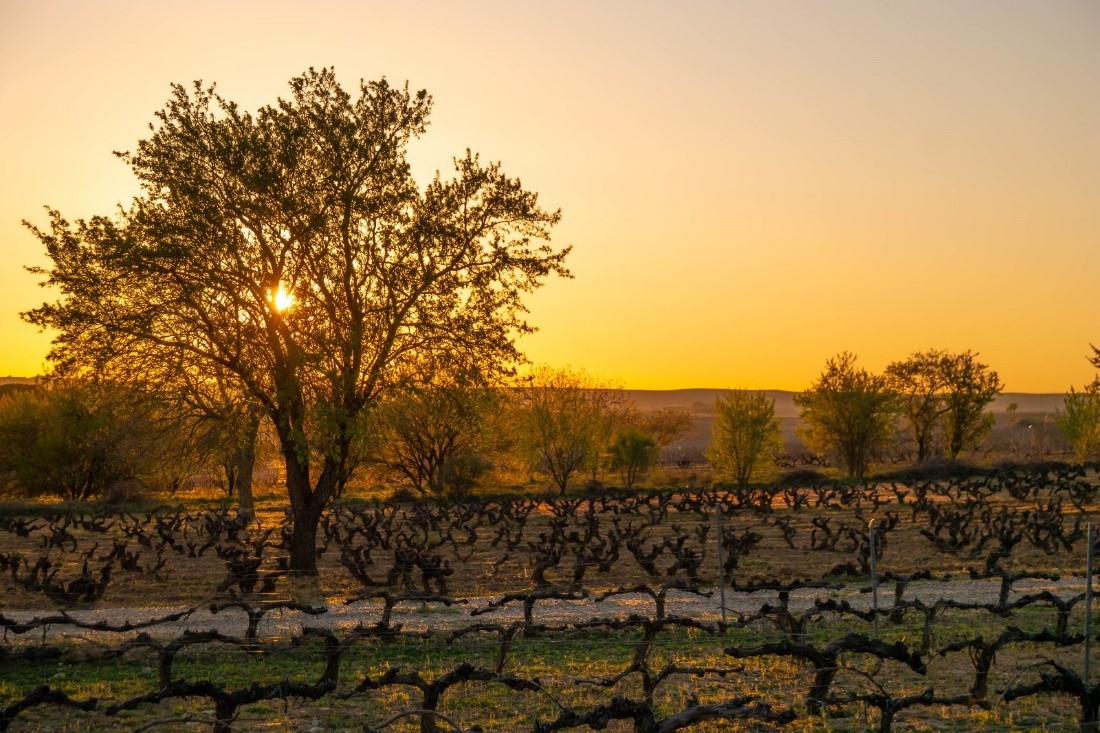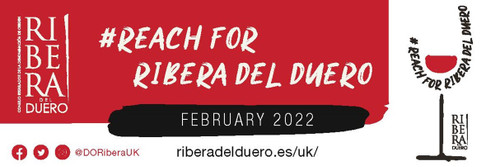Ribera Del Duero
Posted by EWWines on 17th Feb 2022
So where is the Ribera Del Duero? Located in the Upper Duero Valley Ribera is in the Castilla y Leon region of Spain which offers a continental climate cut off from any maritime influence by a handy ring of mountains. This climate offers hot and dry summers, beneficial for viticulture for ripeness and lower disease pressures whilst cold winters allow vines to remain dormant and build the necessary carbohydrate store for the next vintage. Altitude of up to 850m is also a beneficial natural factor in Ribera, allowing for high diurnal temperature range (daytime / night-time temperature difference) which preserve the natural acidity of the fruit by slowing ripeness, powerful tannic structure and red fruit character of the Tinta del País or Tinta Fino, I.e. the famous style of the red wines of Ribera Del Deuro. Stylistically, winemakers tend to be producing wine with longer maceration and shorter maturation in oak with a trend more French than American oak and less new oak which accentuates the fruit concentration (plum and blackberry) and tannins whilst softening the oak influenced of sweet spices, cedar, coconut and a touch of chocolate character commonly found.

Ribera Del Duero first winery to be established was Vega Sicilia in the 1864 when Don Eloy Lecanda y Chaves arrived from a trip to Bordeaux with some fresh cuttings of Cabernet Sauvignon, Merlot and Malbec and planted them in the arid soils of Ribera together with Spain's signature Tempranillo aka Tinta del País or Tinto Fino here. However, until the 1990’s there were very few wineries in the region; when the Denomination of Origin was formed in 1982, it had just 9 members. Fast forward to today and over 280 producers are registered in the region. This explosion in investment without question has been positive and boosted the regions status.
D.O. Ribera del Duero Classifications used to only permit Red and Rose but from 2019 white wine is allowed to be produced in the DO. However, the vast majority of production is still red and law required these be at least 75% Tinta del País in the blend with Cabernet Sauvignon, Garnacha, Merlot, Malbec and a local white variety Albillo (seldom used) permitted as blending components. 100% Tempranillo wines are most common and the quality ranges from good to outstanding with good value mid-priced wines up to the super premium aspirational wines of Vega Sicilia.
Ribera Del Deuro vines were historically bush vines. This traditional bush vine method means all work including harvest must be undertaken by hand but offers protection from the extreme conditions including drought protection during the hot dry summers. It also increases concentration of the fruit and offers more complex wines allowing the dark fruit to shine. Increasingly trellised systems are being introduced to allow for greater volumes and the possibility for some work in the vineyard to be mechanised.

Terms associated with maturation across the region are the recognisable Spanish terms Crianza: aged a minimum of two years, one year in oak; Reserva: aged a minimum of three years, at least one year in oak with the remaining time in bottle; and Gran Reserva: aged a minimum of five years, at least two years in oak with the remaining time in bottle. The longer the wine is in cask, the more of the style of the wine is influenced with sweet spice and wood notes. Time in the bottle allows the flavours to settle and integrate well therefore in theory all wines are ready to drink upon release. There are more age worthy exceptions to this rule at the top end but generally great value can be found in terms of quality to price across the region.
Vina Fuentenarro, Cuatro Meses en Barrica
This is a rewarding wine that is easy to enjoy and a great example of what this region is all about. The wine shows an obvious passion in producing wines of great character, showing the terroir of the Duero, with deep rich Tempranillo wines. Made from vines that are 25 years old and are grown at 650 meters above sea level, the grapes are macerated for 20 days after being picked by hand, and when this is completed the malolactic fermentation takes place in stainless steel tanks. The wine is then aged for 8 months in 225 litre American oak casks before being bottled.
Dominio Fournier Crianza, Ribera del Duero
A bold, elegant red from Dominio Fournier, this 2016 Crianza is made entirely with Tinta del País grapes. The grapes are hand-picked and then fermented in stainless steel and wood before the wine is aged for 12 months in 80% French and 20% American oak. Full of juicy black fruit and hints of spice, it's a star pairing with mature cheeses.
Bodegas Alejandro Fernandez, Pesquera Reserva
Burgundy in colour with an intense cherry red rim, clear and bright. This wine has a deep and elegant nose, with intense notes of blackberry and liquorice, and a touch of well-integrated oak. A very elegant wine, its impressive finesse and silkiness reappear after every sip. The finish is long and intense. Well-rounded tannins and a perfectly-integrated acidity give this wine a freshness and liveliness upon drinking and a great potential for long bottle ageing. Perfect as an accompaniment to stews or grilled lamb.

